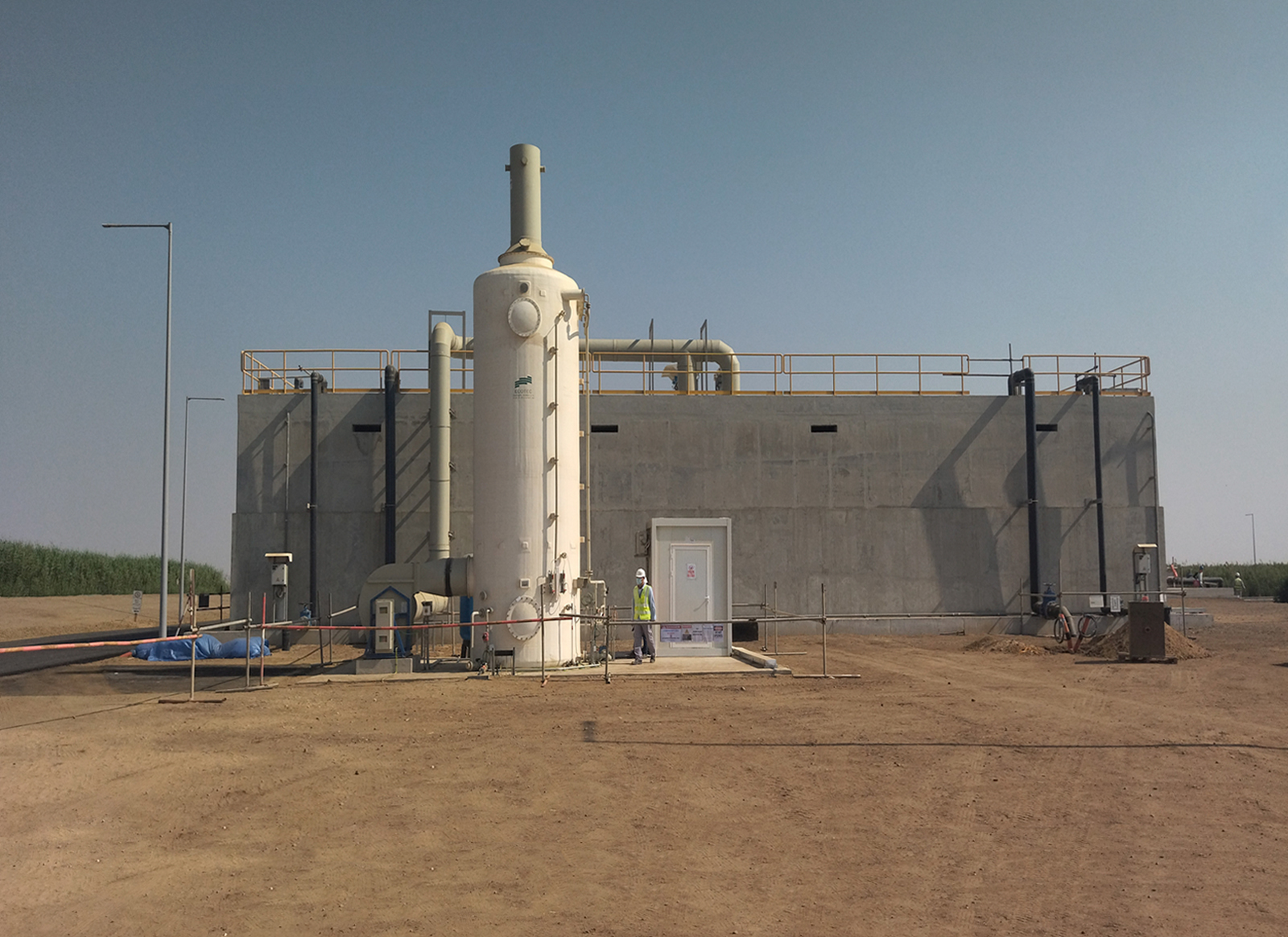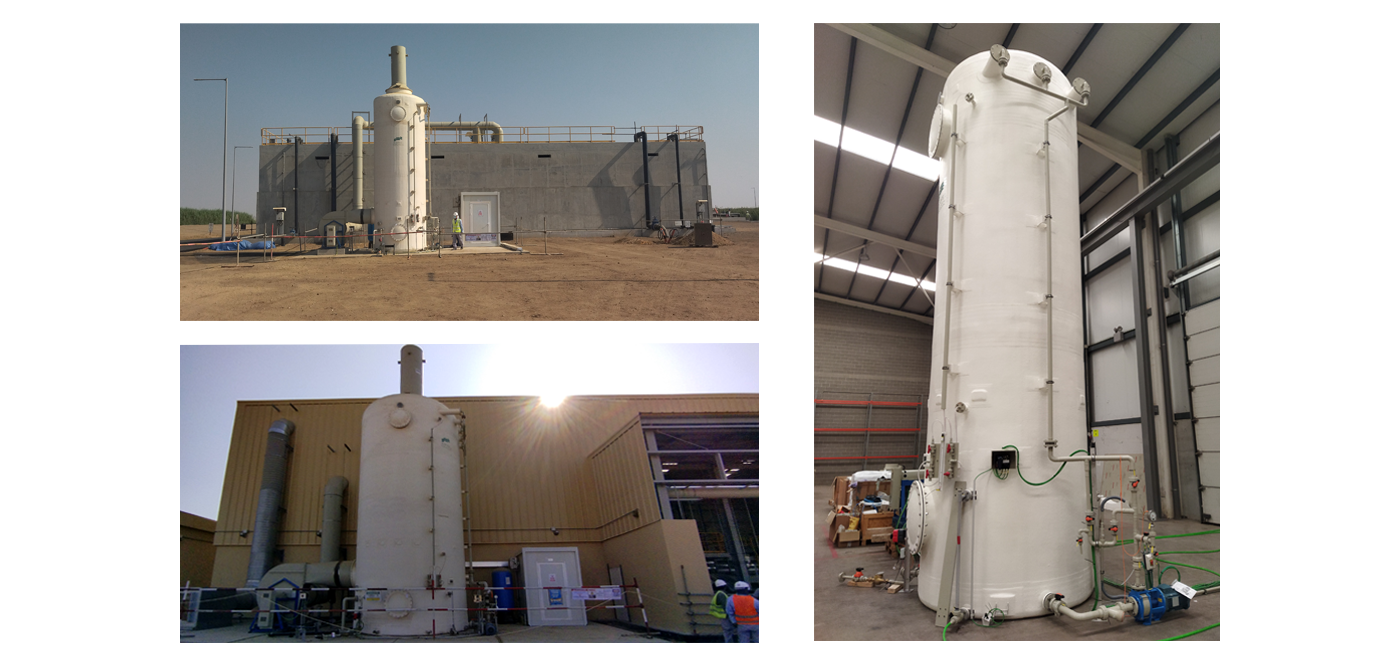Wastewater treatment plants can generate foul odors due to the presence of volatile organic compounds (VOCs) and other odorous gases. This case study introduces the successful implementation of dBiox® Biotrickling systems in a WWTP located in Red Sea, Saudi Arabia to mitigate odors and enhance odor control efficiency.
dBiox® Biotrickling odor control units (OCU) utilize the power of biological processes to efficiently remove and eliminate odorous compounds from industrial exhaust air streams. These units offer a range of benefits, including high removal efficiencies, cost-effectiveness, environmental sustainability, and regulatory compliance.

Below, the plants data:
|
Pollutants: |
H2S, NH3, R-SH |
|
Flow rate: |
OCU 1: 21.000 m3/h OCU 2 and 3: 12.000 m3/h each OCU 4: 8.000 m3/h |
|
Delivered equipment: |
1 tower of 3,5 x 8,8 m (Ø x h) 2 towers of 2,4 x 8,2 m (Ø x h) 1 tower 2 x 7,8 m (Ø x h) Nutrients tanks Fans Extraction and conducting pipework |
Performance:
|
Pollutant |
Inlet |
Performance |
Outlet |
|
H2S |
20 mg/m3 |
98 % |
0,4 mg/m3 |
|
NH3 |
5 mg/m3 |
90% |
0,5 mg/m3 |
|
R-SH |
2 mg/m3 |
95% |
< 0.1 mg/m3 |

The installation the dBiox® Biotrickling systems for odor control in the wastewater treatment plant in Red Sea, Saudi Arabia not only eliminates odor issues but also demonstrates the plant's commitment to environmental sustainability. By customizing the design, and optimizing operation parameters, the odor control units (OCU) installation achieved high performances results in odor reduction and enhanced the plant's overall environmental performance.
